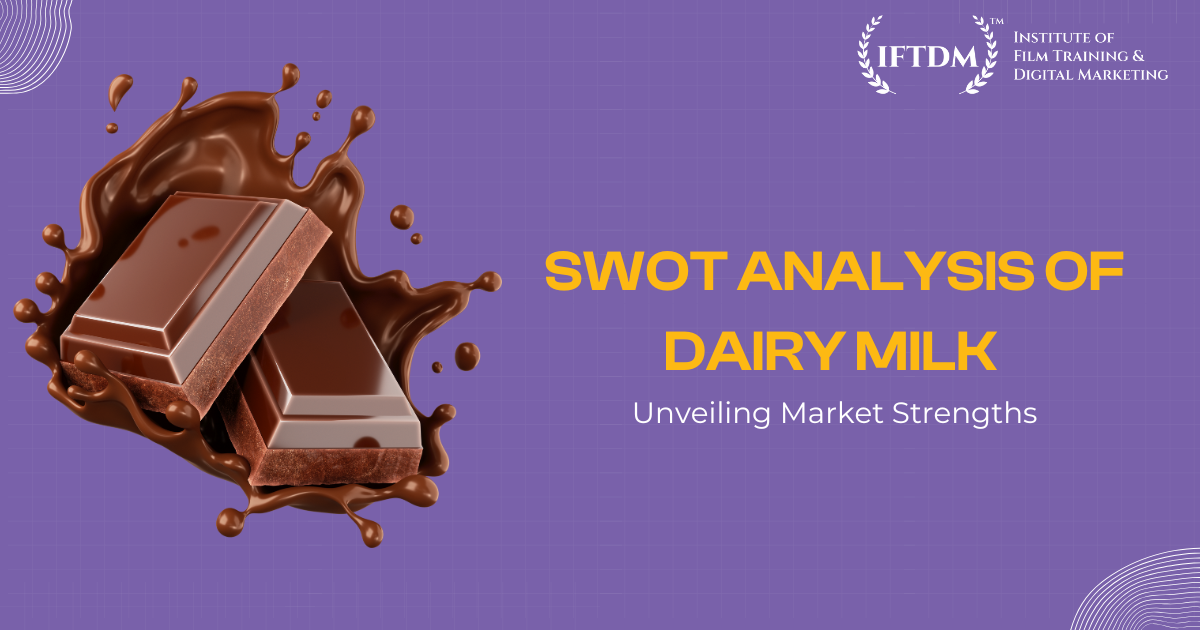Dairy Milk, an iconic brand under the Cadbury umbrella, was first introduced in 1905 and has since become a beloved chocolate choice worldwide. Cadbury, founded in 1824 by John Cadbury, operates as a global leader in the confectionery industry, with a presence in over 50 countries, including the UK, India, Australia, and South Africa. Now part of Mondelez International, which acquired Cadbury for $19 billion in 2010, the company has grown, leveraging Mondelez’s extensive resources and global distribution network.
Dairy Milk is a standout product, contributing significantly to Mondelez’s impressive $36 billion annual revenue as of 2024 and playing a crucial role in the company’s $99.2 billion market capitalization as of 2024. Europe and India are key markets, together accounting for over 30% of Mondelez’s chocolate revenue, with Dairy Milk being a primary driver of sales in these regions.
Cadbury is also committed to sustainability through its Cocoa Life Program, aiming for 100% sustainably sourced cocoa by 2025. This initiative supports better wages and living conditions for farmers while minimizing environmental impact. This analysis will delve into Dairy Milk’s product offerings, its competitors, and marketing strategies, and will provide a comprehensive SWOT analysis along with key marketing lessons.
SWOT Analysis of Dairy Milk: Key Insights

Dairy Milk Products: A Wide Range of Offerings
Cadbury Dairy Milk has a diverse product portfolio that caters to various consumer preferences. Each product under the Dairy Milk umbrella is designed to offer a distinct experience, from traditional milk chocolate to unique flavor combinations. Below is a detailed look at some of the most popular Dairy Milk products.
Cadbury Dairy Milk Classic Bar
- The original and most beloved product, Dairy Milk Classic, is made from rich and creamy milk chocolate. It is known for its smooth texture and melt-in-the-mouth consistency. Available in various sizes, this product is a staple in households across the globe.
Dairy Milk Fruit & Nut
For consumers who enjoy a blend of flavors, Fruit & Nut combines smooth Dairy Milk chocolate with crunchy almonds and sweet raisins. This product has been a long-standing favorite for those who want a more indulgent and textured chocolate experience.
Dairy Milk Silk
Dairy Milk Silk is a premium variant aimed at consumers seeking a richer, more luxurious chocolate experience. It has a softer, smoother texture than the regular Dairy Milk bar, and is often marketed as an indulgence for special occasions or personal treats.
Dairy Milk Caramel
A fusion of creamy chocolate and a gooey caramel center, Dairy Milk Caramel is perfect for consumers who enjoy a balance of sweet flavors and textures. The caramel center adds an extra layer of richness, making it one of the most popular variants in the Dairy Milk range.
Dairy Milk Oreo
Combining chocolate with one of the world’s favorite cookies, Dairy Milk Oreo offers the creamy sweetness of milk chocolate mixed with crunchy Oreo cookie bits. This product has been a huge success, especially among younger audiences who enjoy innovative flavor combinations.
Dairy Milk Bubbly
Dairy Milk Bubbly is a light and airy chocolate bar with a unique texture. The bar is aerated, creating bubbles inside the chocolate, which gives it a different feel and taste experience compared to traditional chocolate bars. It is designed for consumers who enjoy something fun and different.
Dairy Milk Marvellous Creations
One of the more adventurous products in the range, Marvellous Creations features an array of quirky ingredients like jelly beans, popping candy and crunchy biscuits mixed into the classic Dairy Milk chocolate. It’s a product designed to delight consumers with surprising textures and flavors in every bite.
Dairy Milk Crispello
Crispello combines Dairy Milk chocolate with a crispy wafer center, offering a light and crunchy alternative to the traditional chocolate bar. This product is targeted at consumers who enjoy chocolate with a bit of texture and crunch, offering a break from the smoothness of other Dairy Milk bars.
Limited Edition Variants
Cadbury frequently launches limited edition versions of Dairy Milk to cater to seasonal demand or as part of promotional campaigns. These limited-edition products often feature unique flavor combinations or packaging tied to specific events or holidays, such as festive flavors during Christmas or special packaging for sporting events like the Olympics.
Dairy Milk Buttons
Dairy Milk Buttons are bite-sized pieces of smooth chocolate, making them an easy-to-share option. Often marketed to families, these are particularly popular among younger consumers and offer a convenient, portion-controlled way to enjoy Dairy Milk’s signature taste.
Competitors of Cadbury Dairy Milk in India

The chocolate market is highly competitive, with numerous brands vying for consumer attention. Cadbury Dairy Milk faces significant competition from several key players, each bringing unique strengths and products to the table. Here’s a closer look at some of Dairy Milk’s main competitors:
Nestlé
Nestlé is one of the largest food and beverage companies globally including India and a formidable competitor in the chocolate market. With products like Munch, Kit Kat, and Bar One. Nestlé leverages strong distribution networks and innovative marketing campaigns to capture market share. The popularity of Kit Kat, particularly among younger consumers, makes it a formidable competitor to Dairy Milk.
Ferrero Group
Ferrero, known for its premium chocolate products, presents a unique challenge to Dairy Milk. Brands like Ferrero Rocher and Tic Tac cater to consumers seeking luxury and indulgence. Ferrero’s focus on high-quality ingredients and premium packaging appeals to a different segment of the market, making it a strong competitor, especially during gifting seasons.
Parle Products
Parle is a well-known brand in India, primarily famous for its biscuits. However, it also offers chocolate products like Parle Kreams and Parle’s chocolate bars. With its extensive distribution network and affordability, Parle is a strong competitor in the budget segment of the chocolate market.
Lotte India
Lotte is gaining traction in India with products like Choco Pie and Lotte Choco. Choco Pie, a snack that combines cake and chocolate, has become increasingly popular, especially among younger consumers. Its unique offering presents an alternative to traditional chocolate bars.
The competitive landscape for Cadbury Dairy Milk globally as well as in India is diverse and rapidly evolving.
Marketing Strategies of Cadbury Dairy Milk

Emotional Marketing
Dairy Milk has successfully adopted emotional marketing to build a connection with its audience. Campaigns like “Kuch Meetha Ho Jaaye” in India focus on moments of happiness, celebration, and togetherness, positioning the chocolate as more than just a product, but a part of shared experiences.
Digital and Social Media
In today’s digital age, Dairy Milk has effectively used social media platforms such as Instagram, Facebook, and Twitter to engage with younger audiences. Their campaigns are highly interactive, relatable, and visually appealing. Campaigns like #JustAskAnOreo and #CadburyJoyDeliveries have garnered significant attention, with Dairy Milk leveraging influencer partnerships and user-generated content to amplify brand presence.
Seasonal Marketing
Dairy Milk capitalizes on festive seasons to boost sales. Special edition chocolates are launched during Easter, Christmas, Valentine’s Day, and Diwali, often creating a sense of urgency among buyers. By aligning its product offerings with these celebrations, Dairy Milk ensures strong brand visibility and relevance during key purchasing periods.
In-Store Promotions
Cadbury invests heavily in in-store promotions for Dairy Milk, using eye-catching displays and attractive offers. By placing products in prominent positions and offering discounts, Dairy Milk encourages impulse purchases, reinforcing its presence in retail outlets and supermarkets.
Explore more: SWOT Analysis of the Automobile Industry
Strengths of Dairy Milk
- Strong Brand Recognition: Dairy Milk has iconic global recognition, with its purple packaging and logo being synonymous with quality chocolate.
- Diverse Product Range: Offering various chocolates and confectioneries, Dairy Milk appeals to a wide range of consumers, from children to adults.
- Global Distribution: Dairy Milk’s extensive distribution network ensures it is accessible in numerous countries, contributing to its worldwide popularity.
- Innovative Marketing: The brand’s emotional marketing campaigns are highly effective, fostering a strong emotional bond with consumers.
- Parent Company Support: As a part of Mondelez International, Dairy Milk benefits from significant resources for innovation and market expansion.
Weaknesses of Dairy Milk
- Dependence on Major Markets: Dairy Milk relies heavily on markets like the UK and India, making it vulnerable to market fluctuations and economic downturns in these regions.
- High Sugar Content: With increasing health concerns related to sugar consumption, Dairy Milk may face challenges as consumers become more health-conscious.
- Limited Premium Market Penetration: Dairy Milk has a strong mass-market appeal but struggles to compete with premium chocolate brands like Lindt and Ferrero Rocher.
Opportunities of Dairy Milk
- Health-Conscious Offerings: Dairy Milk can introduce sugar-free or low-sugar alternatives to cater to the growing demand for healthier snack options.
- Emerging Markets: There is significant growth potential in emerging markets like China and Latin America, where localized flavors could increase brand relevance.
- Sustainability Initiatives: With the Cocoa Life program, Dairy Milk can capitalize on the trend toward sustainable and ethically sourced products to attract eco-conscious consumers.
- Brand Collaborations: Partnerships with other food and beverage brands can help Dairy Milk tap into new consumer segments by introducing innovative co-branded products.
Threats in the SWOT Analysis of Dairy Milk
- Intense Competition: The chocolate industry is fiercely competitive, with brands like Nestlé, Mars, and Ferrero posing strong competition.
- Health Regulations: Governments are increasingly imposing restrictions on sugar content in food products, which may affect Dairy Milk’s formulas or increase production costs.
- Economic Instability: In times of economic crisis, consumers may opt for cheaper alternatives, which could negatively impact Dairy Milk’s sales.
- Fluctuating Raw Material Costs: Volatility in the prices of cocoa and sugar could increase production costs and reduce profit margins.
Building Bonds: How Dairy Milk Turns Chocolate into a Lasting Connection
Dairy Milk’s SWOT analysis highlights a vital marketing lesson: it’s not just about selling a product, but about building emotional connections that resonate deeply with consumers. In a world where customer choices are influenced by experiences rather than mere transactions, Dairy Milk has effectively turned chocolate into a symbol of joy, celebration, and shared moments.
However, the brand must continually evolve to meet the growing demand for healthier, sustainable options while maintaining its emotional appeal. The key takeaway here is that in marketing, brands that prioritize emotional engagement and adapt to consumer trends will not only survive but thrive in an increasingly competitive landscape.






